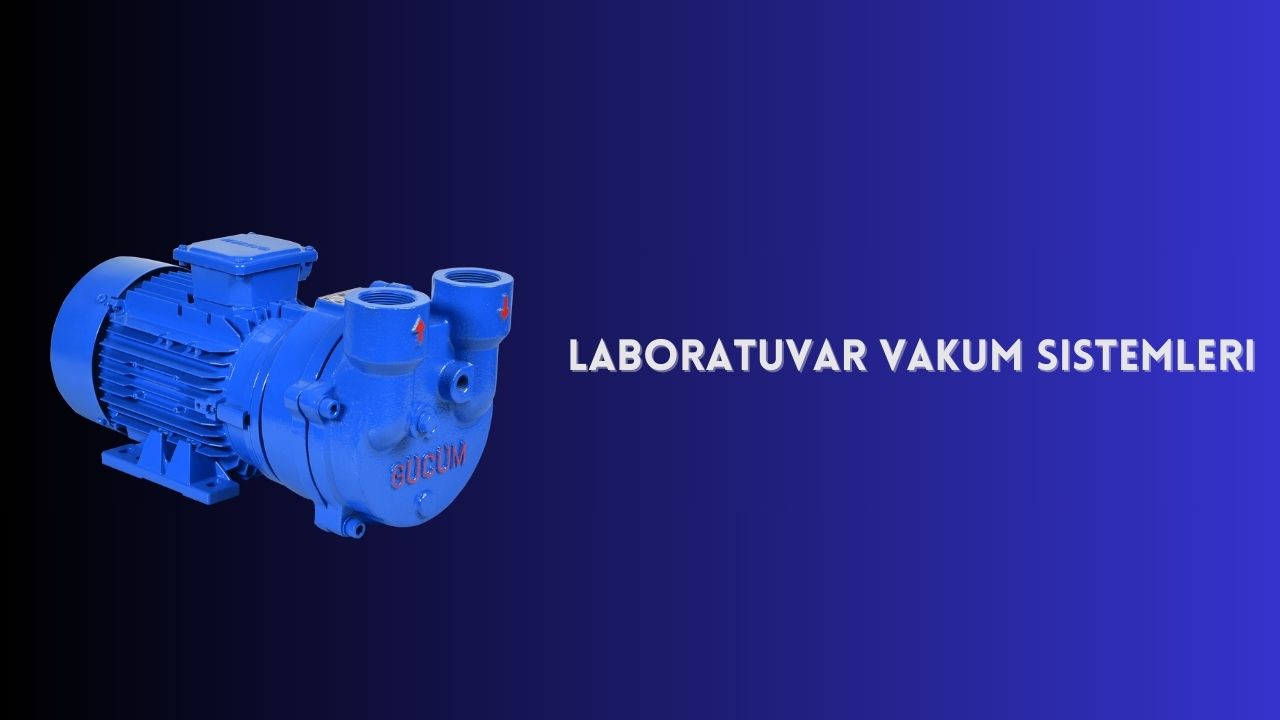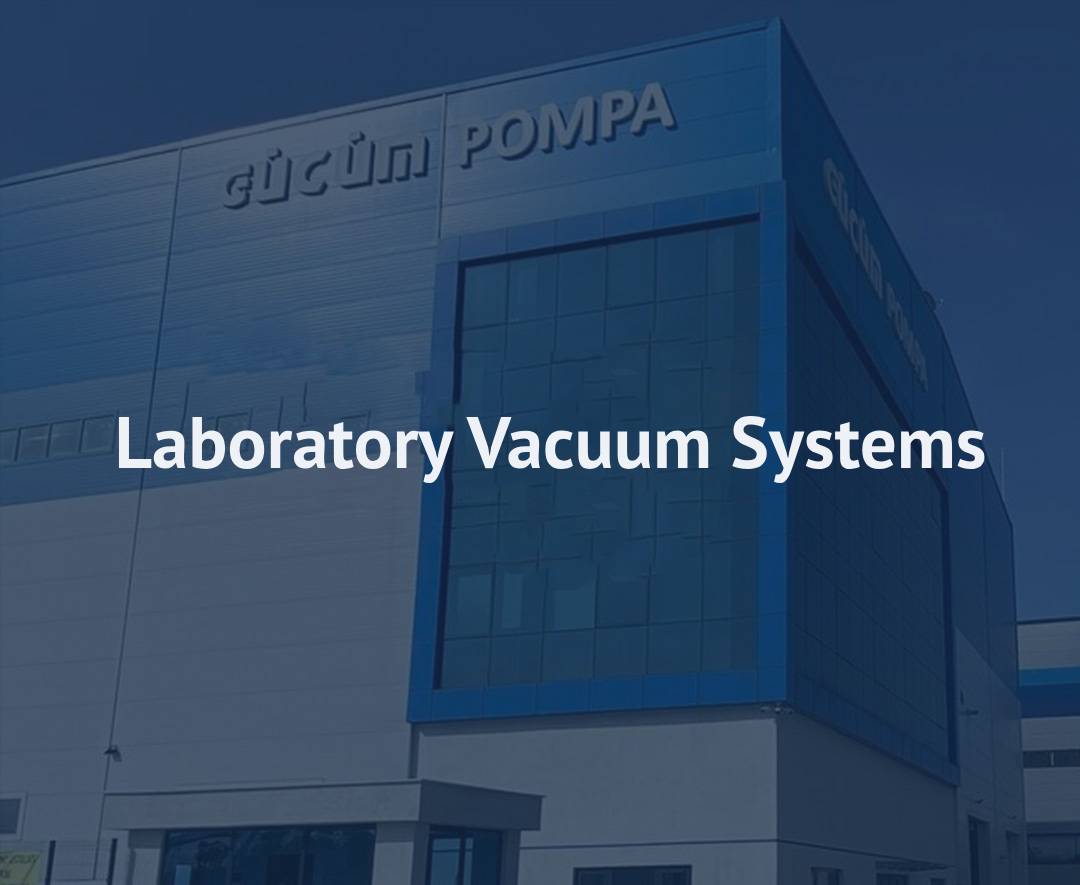Laboratory Vacuum Systems
Laboratory Vacuum Systems: Essential Technology for Scientific Research
Laboratory vacuum systems play a critical role in scientific research and industrial applications. These systems create specific vacuum levels to enable the execution of precise experiments and processes. By controlling pressure in a laboratory environment, vacuum systems facilitate accelerating chemical reactions, purifying materials, and performing other vital processes in fields such as chemistry, biology, and the pharmaceutical industry. This article provides detailed information about the history, operation, types, applications, and more of laboratory vacuum systems.
History of Laboratory Vacuum Systems
The development of vacuum technology has had a profound impact on both scientific research and industrial production. The foundations of vacuum technology were laid in the 17th century during Robert Boyle’s famous study known as "Boyle’s Law," where he examined the relationship between the pressure and volume of gases. This marked the beginning of the understanding that air could be removed from an environment to create a vacuum. However, the true revolution in vacuum technology began in the 19th century when air pumps were invented, making it possible to extract air from enclosed spaces.
By the early 20th century, vacuum systems had found their place in scientific laboratories. With the invention of the electric vacuum pump, laboratory vacuum systems became more reliable, efficient, and widely used. These advancements paved the way for significant discoveries in chemistry, physics, and biology, as well as more efficient industrial processes. Today, vacuum systems have become indispensable in scientific and industrial studies, and these technologies continue to evolve with developments in materials science, electronics, and automation.

Working Principle of Laboratory Vacuum Systems
The working principle of laboratory vacuum systems relies on removing air or gases from a specific environment to create negative pressure. A vacuum pump generates a low-pressure environment, enabling liquids to evaporate at lower temperatures, accelerating chemical reactions, or purifying materials. In short, vacuum systems provide controlled environments to ensure that specific experiments and processes can be conducted more efficiently and safely.
Vacuum pumps reduce pressure by drawing in and expelling air or gas. When this negative pressure is applied, it can significantly affect the physical properties of materials. For instance, when the air pressure in a chamber is lowered, the boiling point of liquids decreases, allowing them to evaporate without requiring high heat. This feature offers a highly valuable advantage, particularly in processes such as chemical and pharmaceutical research, where substances need to be carefully manipulated at low temperatures.
Types of Laboratory Vacuum Systems
Laboratory vacuum systems vary depending on their application areas. Choosing the right system is crucial for ensuring efficient operation and achieving desired results. Below are the most commonly used types of vacuum systems in laboratory settings:
Rotary Pumps
Rotary pumps are among the most widely used vacuum pumps in laboratories. They are generally preferred for medium to low vacuum levels. These pumps operate through the mechanical motion of a rotor, creating airflow and removing gases and air. Rotary pumps are popular due to their reliability, ease of use, and relatively affordable cost.
Roots Pumps
Roots pumps are typically used in conjunction with primary pumps to achieve low vacuum levels. These pumps offer high pumping speeds and are ideal for applications requiring rapid removal of air or gases at low pressures. Roots pumps are frequently used in large industrial processes and laboratories where fast and efficient air evacuation is needed.
Diffusion Pumps
Diffusion pumps are specifically designed to achieve high and ultra-high vacuum conditions. These pumps use a heated liquid to condense gas molecules and direct them out of the system. Diffusion pumps are widely used in research environments where precise control of vacuum levels is required. For example, they are highly significant in materials science and high-energy physics.
Molecular Pumps
Molecular pumps operate on the principle of capturing and removing gas molecules at a molecular level. These pumps can achieve very high vacuum levels and are typically used in advanced scientific applications such as space research, particle physics, and electron microscopy.
Applications of Laboratory Vacuum Systems
Vacuum systems are used in a wide range of laboratory and industrial applications, each tailored to specific requirements and processes. Here are some common applications:
Chemistry and Biochemistry Laboratories
In chemistry and biochemistry laboratories, vacuum systems are used for solvent evaporation, purification, and accelerating reactions. Vacuum environments provide precise control over temperature and pressure, enabling chemical processes to be conducted without overheating or oxidation.
Microbiology Laboratories
In microbiology laboratories, vacuum systems play a key role in sterilization, drying, and creating low-oxygen environments for growing anaerobic bacteria. They are also used for sample preparation and vacuum filtration processes.
Physical and Materials Testing
In the field of physical testing, vacuum systems are used to simulate space conditions or study how materials behave in low-pressure environments. For example, vacuum systems are necessary for testing the thermal properties of metals or observing gas behavior at low pressures.
Pharmaceutical Production
In pharmaceutical laboratories and production facilities, vacuum systems are critical for freeze-drying (lyophilization) and solvent removal processes. These processes require controlled removal of moisture or solvents, and vacuum systems provide an excellent solution for these applications.
Food Processing
Vacuum systems are also used in the food processing industry, particularly in vacuum packaging. This technology removes oxygen from packages, preventing food spoilage and extending shelf life by inhibiting oxidation and microbial growth.
Choosing the Right Vacuum System
Selecting the right vacuum system for a laboratory is not a one-size-fits-all process. Several key factors must be considered to meet the specific requirements of the application:
Required Vacuum Level
Different laboratory processes require different vacuum levels. Highly precise processes may require ultra-high vacuum systems, while less sensitive processes may suffice with medium or low vacuum levels.
System Capacity
System capacity indicates that the size and capacity of the vacuum system must match the scale of the experiment or production process. Larger systems are necessary for large-scale processes, but smaller systems may suffice for laboratory-scale experiments.
Energy Efficiency
The energy consumption of a vacuum system can be a significant operational cost. Energy-efficient models reduce long-term operating costs while minimizing environmental impact. Variable speed drives in vacuum systems can enhance energy efficiency by adjusting the pump speed according to demand.
Vacuum System Maintenance
Regular maintenance of vacuum systems is essential to ensure optimal performance. Maintenance tasks include checking pumps, detecting leaks, replacing filters, and changing oils. These steps help prevent early failures and extend the system’s lifespan.
Regular maintenance of vacuum systems is critical to ensuring efficient operation and avoiding costly downtime.


